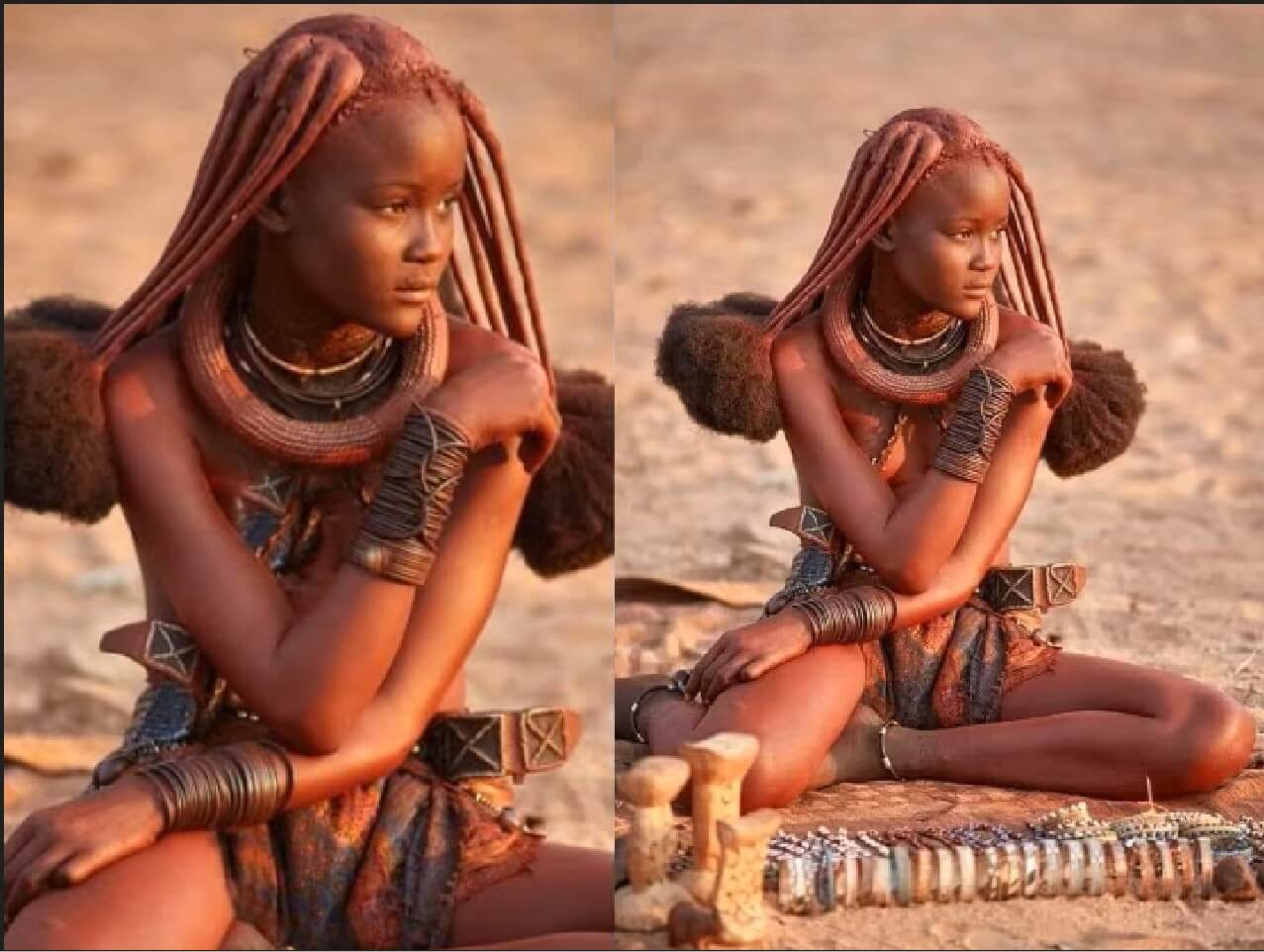Know About Himba Tribe of Namibia History, Culture, Hairs :The Himba tribe is an indigenous group residing in the remote regions of northern Namibia, primarily in the Kunene region. Known for their unique culture, traditional attire, and distinctive hairstyles, the Himba people have a rich history and a way of life deeply rooted in their ancestral traditions.
Know About Himba Tribe of Namibia History, Culture, Hairs
Know About Himba Tribe of Namibia History, Culture, Hairs
The history of the Himba tribe can be traced back to the early 16th century when they migrated from western Africa. They belong to the larger Herero ethnic group and have managed to maintain their distinct identity and cultural practices despite external influences. The Himba people have a semi-nomadic lifestyle, moving their livestock herds to find suitable grazing areas and water sources.
The Himba culture is characterized by strong communal ties, a deep respect for nature, and a rich spiritual belief system. They have a patriarchal social structure where the eldest male holds significant authority and makes important decisions for the family or clan. Women also play an essential role in the community, taking care of household chores, raising children, and preserving their cultural heritage.
One of the most distinctive aspects of the Himba culture is their traditional attire and adornments. Both men and women wear intricate handmade jewelry, including necklaces, bracelets, and anklets made from iron, shells, and beads. Women wear traditional clothing called “otjize,” which consists of a goatskin skirt and a leather covering for the upper body. They also apply a mixture of red ochre, butterfat, and herbs known as “otjize” to their skin and hair, giving them a reddish-brown appearance.
The Himba women’s intricate hairstyles are a source of fascination and admiration. They intricately braid their hair and add extensions made from goat hair, called “erembe,” which are often covered in a mixture of clay and otjize to create elaborate hairstyles. The hairstyles hold cultural significance, symbolizing age, marital status, and social standing. It takes hours to create these hairstyles, and they are often maintained for several weeks.
Religion and spirituality are central to the Himba people’s lives. They believe in a supreme being called “Mukuru” and a pantheon of ancestor spirits who serve as intermediaries between the living and the divine. Rituals and ceremonies are conducted to seek guidance, protection, and blessings from the ancestors. The Himba people also have a strong connection to the natural world, believing that all things in nature have a spiritual essence.
The Himba tribe’s daily life revolves around herding livestock, farming, and gathering wild resources. They rely on their livestock, such as cattle, goats, and sheep, for sustenance and as a measure of wealth. Agriculture is practiced using traditional methods, with crops like maize, millet, and squash being cultivated.
Despite the encroachment of modernity and the influence of the outside world, the Himba people have managed to preserve their cultural heritage and traditional way of life. They maintain a deep connection with their land, their ancestors, and their unique identity. However, they also face challenges in adapting to the changing world while preserving their traditions.
Visiting a Himba community offers a chance to witness their unique lifestyle and gain insights into their rich culture. It is important to approach their communities with respect and sensitivity, as they value their privacy and cultural integrity.
The Himba tribe of Namibia represents a fascinating blend of history, culture, and tradition. Their distinctive attire, elaborate hairstyles, and spiritual beliefs contribute to their vibrant and unique identity. Despite the challenges they face, the Himba people continue to be resilient in preserving their cultural heritage, serving as a testament to the richness and diversity of indigenous cultures in the world.

